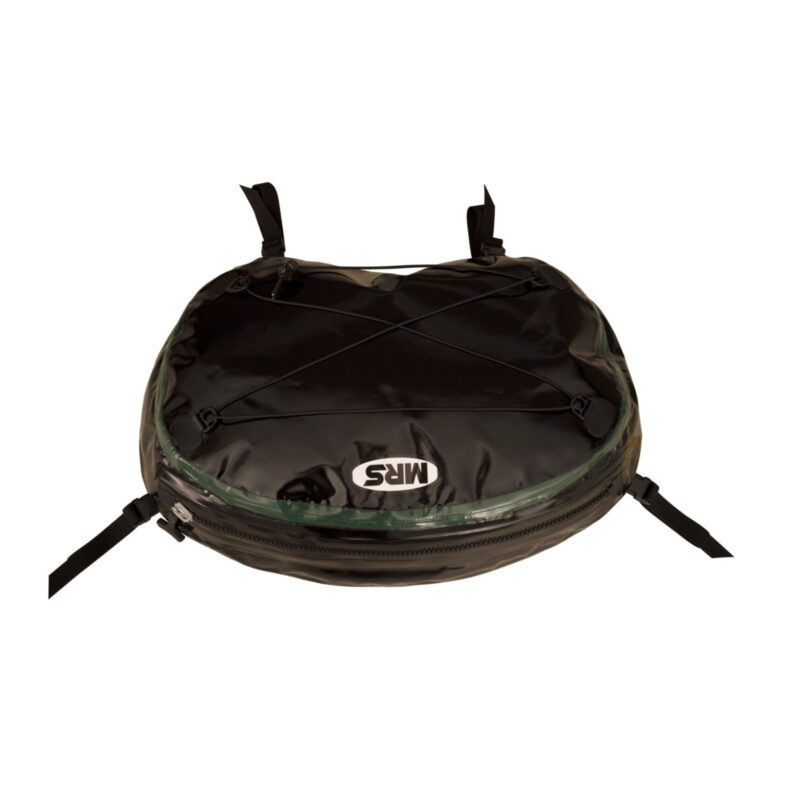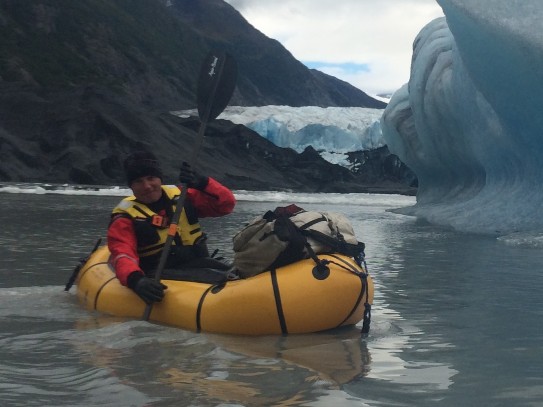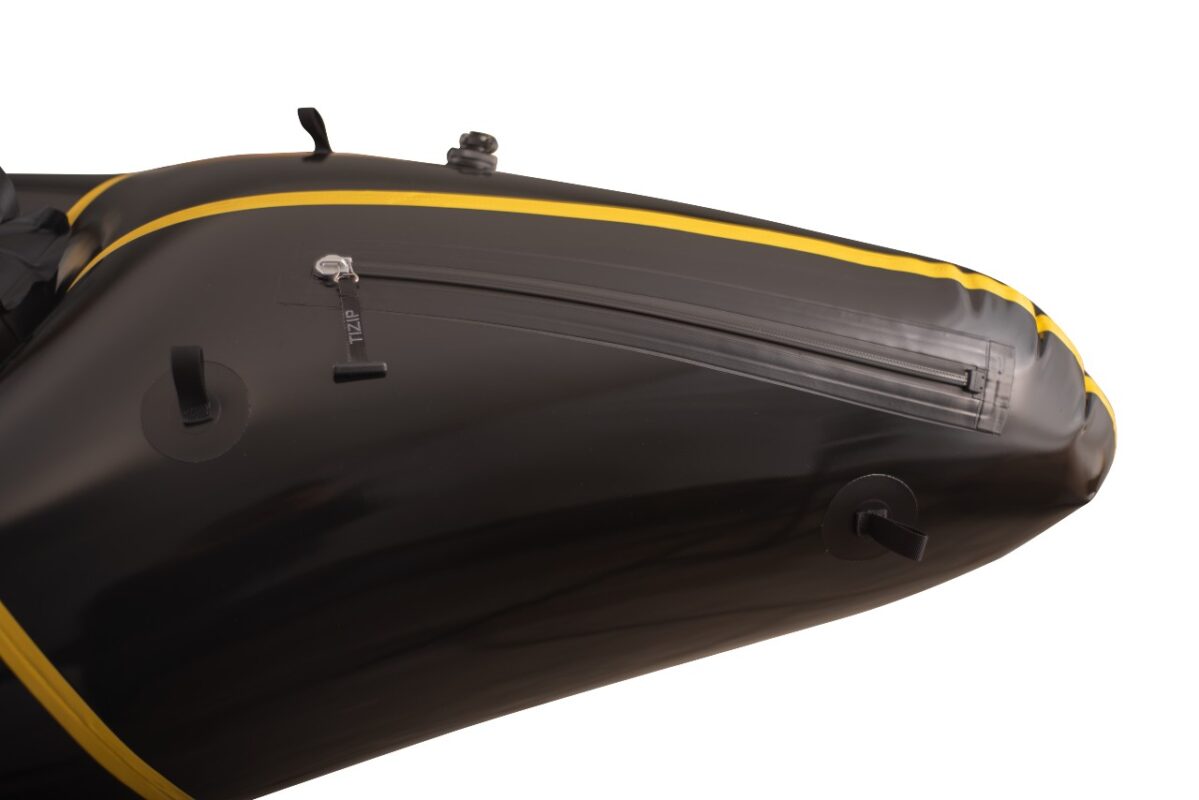Carrying cargo
Including a packraft on backpacking or multisport adventures opens a world of possibilities. Popular packraft cargo includes other passengers, pets, wild game, overnight camping gear, bikes, fishing gear and skis.
Loading cargo in and on your packraft dramatically affects maneuverability and recoverability.
Thererfore, get familiar with how your boat handles and performs in a controlled setting before heading out to moving or remote water and consider choosing floating easier rivers because of the increased vulnerability of carrying cargo. Cargo strapped to a packraft also increases the risk of entrapment.
Attaching cargo to the bow

Deck bag
Deck bags (e.g. MRS BowBag or Anfibio DeckPack) are low-volume waterproof bags that strap onto the packraft’s bow or stern. Deck bags are excellent for storing items that you need access to during the day: food, water, clothing, maps, photo equipment, etc. Deck bags can also be used as an accessory pouch to boost the volume of your backpack while hiking.

Larger loads
If you can’t store cargo inside the hull (cargo zipper), your best option is to strap it to the bow. Resist the temptation to load bags in the cockpit with you. In addition to possibly losing the bags during a swim, anything stored in the cockpit is an entrapment hazard.
Cargo zippers (ISS)
Some packrafts come with a waterproof and airtight zipper on the hull (stern or side tube) that allows you to store equipment inside the boat: Integrated Storage System (ISS). Other packrafts (e.g. Anfibio Nano RTC) utilize a roll-top closure, which follows the same loading guidelines.

Advantages of storing cargo inside the boat:
- Cargo stays dry
- Loading weight in the tubes lowers the boat’s center of gravity, which makes it more stable
- It is easier to see over an unloaded bow
- Overturning a capsized packraft is easier than if the backpack is on the bow
- Edging is easier with cargo in the tubes.
The disadvantages of zippers is the added cost and the need for regular maintenance, especially if you are visiting silty rivers and camping on sand.
Cargo zippers stored rolled up when wet for more than 48 hours may deteriorate due to mold and start leaking irreversibly (hydrolysis).
Best practices:
- Be careful not to load dirty gear through the zipper
- Rinse the zipper before you open and close it
- Be careful not to overstretch the docking end of the zipper when loading cargo
- Don’t fold the zipper tightly when rolling your boat for packing or storage
- Open the zipper and allow it to dry after every use
- New packrafts have dry zippers. Lubricate the zipper before your first outing.
